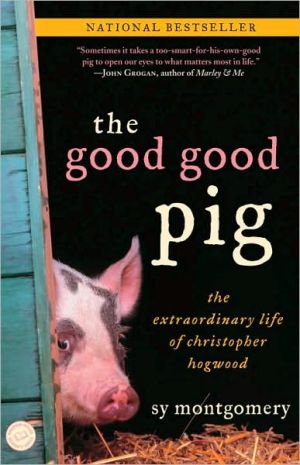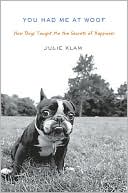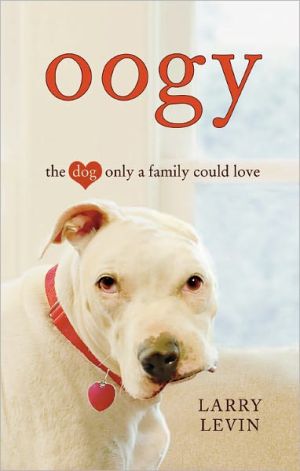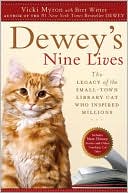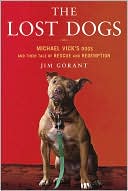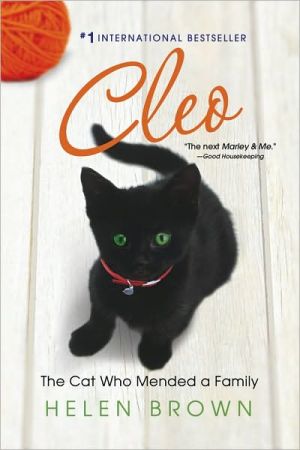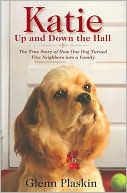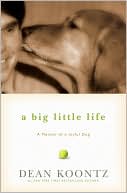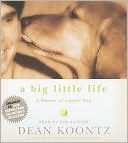The Good Good Pig: The Extraordinary Life of Christopher Hogwood
“Christopher Hogwood came home on my lap in a shoebox. He was a creature who would prove in many ways to be more human than I am.”\ –from The Good Good Pig\ A naturalist who spent months at a time living on her own among wild creatures in remote jungles, Sy Montgomery had always felt more comfortable with animals than with people. So she gladly opened her heart to a sick piglet who had been crowded away from nourishing meals by his stronger siblings. Yet Sy had no inkling that this piglet,...
Search in google:
“Christopher Hogwood came home on my lap in a shoebox. He was a creature who would prove in many ways to be more human than I am.”–from The Good Good PigA naturalist who spent months at a time living on her own among wild creatures in remote jungles, Sy Montgomery had always felt more comfortable with animals than with people. So she gladly opened her heart to a sick piglet who had been crowded away from nourishing meals by his stronger siblings. Yet Sy had no inkling that this piglet, later named Christopher Hogwood, would not only survive but flourish–and she soon found herself engaged with her small-town community in ways she had never dreamed possible. Unexpectedly, Christopher provided this peripatetic traveler with something she had sought all her life: an anchor (eventually weighing 750 pounds) to family and home.The Good Good Pig celebrates Christopher Hogwood in all his glory, from his inauspicious infancy to hog heaven in rural New Hampshire, where his boundless zest for life and his large, loving heart made him absolute monarch over a (mostly) peaceable kingdom. At first, his domain included only Sy’s cosseted hens and her beautiful border collie, Tess. Then the neighbors began fetching Christopher home from his unauthorized jaunts, the little girls next door started giving him warm, soapy baths, and the villagers brought him delicious leftovers. His intelligence and fame increased along with his girth. He was featured in USA Today and on several National Public Radio environmental programs. On election day, some voters even wrote in Christopher’s name on their ballots.But as this enchanting book describes, Christopher Hogwood’s influence extended far beyond celebrity; for he was, as a friend said, a great big Buddha master. Sy reveals what she and others learned from this generous soul who just so happened to be a pig–lessons about self-acceptance, the meaning of family, the value of community, and the pleasures of the sweet green Earth. The Good Good Pig provides proof that with love, almost anything is possible. Publishers Weekly Montgomery's books on exotic wildlife (Journey of the Pink Dolphins, etc.) take her to the far corners of the world, but the story of her closest relationships with the animal kingdom plays out in her own New England backyard. When she adopts a sickly runt from a litter of pigs, naming him Christopher Hogwood after the symphony conductor, raising him for slaughter isn't an option: Montgomery's a vegetarian and her husband is Jewish. Refitting their barn to accommodate a (mostly) secure sty, they keep Christopher as a pet. As he swells to 750 pounds, he becomes a local celebrity, getting loose frequently enough that the local police officer knows to carry spare apples to lure him back home. The pig also bonds with Montgomery's neighbors, especially two children who come over to help feed him and rub his tummy. Montgomery's love for Christopher (and later for Tess, an adopted border collie) dominates the memoir's emotional space, but she's also demonstrably grateful for the friendships the pig sparks within her community. The humor with which she recounts Christopher's meticulous eating habits and love of digging up turf is sure to charm readers. (June) Copyright 2006 Reed Business Information.
Christopher Hogwood came home on my lap in a shoe box. On a rain-drenched April evening, so cold the frogs were silent, so gray we could hardly see our barn, my husband drove our rusting Subaru over mud roads sodden with melted snow. Pig manure caked on our boots. The smell of a sick animal hung heavy in our clothes. It did not seem an auspicious time to make the life-changing choice of adopting a pig. That whole spring, in fact, had been terrible. My father, an Army general, a hero I so adored that I had confessed in Sunday school that I loved him more than Jesus, was dying painfully, gruesomely of lung cancer. He had survived the Bataan Death March. He had survived three years of Japanese prison camps. In the last months of my father's life, my glamorous, slender mother-still as crazy about him as the day they'd met forty years before-resisted getting a chairlift, a wheelchair, a hospice nurse. She believed he could survive anything. But he could not survive this. \ \ The only child, I had ?own back and forth from New Hampshire to Virginia to be with my parents whenever I could. I would return to New Hampshire from these wrenching trips to try to ?nish my ?rst book, a tribute to my heroines, primatologists Jane Goodall, Dian Fossey, and Biruté Galdikas. The research had been challenging: I had been charged by an angry silverback gorilla in Zaire, stood up by Jane Goodall in Tanzania, undressed by an orangutan in Borneo, and accosted for money by a gun-toting guard ten thousand feet up the side of a volcano in Rwanda. Now I was on a tight deadline, and the words wouldn't come. My husband, who writes on American history and preservation, was in the heat of writing his second book. In the Memory House is about time and change in New England, set largely in our corner of the world. But it looked like it might not stay ours for long. For the past three years, ever since our marriage, we had lived, ?rst as renters and then as caretakers, in an idyllic, 110-year-old white clapboard farmhouse on eight acres in southern New Hampshire, near mountains that Thoreau had climbed. Ours was the newest house in our small neighborhood. Though our neighbors owned the two-hundred-year-old "antiques" that real estate agents praised, this place had everything I'd ever wanted: a fenced pasture, a wooded brook, a three-level barn, and forty-year-old lilacs framing the front door. But it was about to be sold out from under us. Our landlords, writer-artist friends our age whose parents had bankrolled the house, had moved to Paris and didn't plan to come back. We were desperate to buy the place. \ \ But because we were both freelance writers, our income was deemed too erratic to merit the mortgage. It seemed I was about to lose my father, my book, and my home. \ \ But for Christopher Hogwood, the spring had been more terrible yet. He had been born in mid-February, on a farm owned by George and Mary Iselin, about a thirty-?ve-minute drive from our house. We knew George and Mary by way of my best friend, Gretchen Vogel. Gretchen knew we had a lot in common. "You'll love them," Gretchen had assured me. "They have pigs!" In fact, George had been raising pigs longer than Mary had known him. "If you're a farmer or a hippie," George had reasoned, "you can make money raising pigs." George and Mary were quintessential hippie farmers: born, as we were, in the 1950s, they lived the ideals of the late '60s and early '70s- peace, joy, and love-and, both blessed with radiant blue eyes, blond hair, and good looks, always looked like they had just woken up refreshed from sleeping in a pile of leaves somewhere, perhaps with elves in attendance. They were dedicated back-to-the-landers who lived out of their garden and made their own mayonnaise out of eggs from their free-range hens. They were idealistic, but resourceful, too: it did not escape them that there are vast quantities of free pig food out there, from bakeries, school cafeterias, grocery stores, and factory outlets. George and Mary would get a call to come pick up forty pounds of potato chips or a truckload of Twinkies. To their dismay, they discovered their kids, raised on homemade, organic meals, would sometimes sneak down to the barn at 4 a.m. and eat the junk food they got for the pigs. ("We found out because in the morning we'd ?nd these chocolate rings around their mouths," Mary told me.) On their shaggy, overgrown 165 acres, they cut their own ?rewood, hayed the ?elds, and raised not only pigs but draft horses, rabbits, ducks, chickens, goats, sheep, and children. But the pigs, I suspect, were George's favorites. And they were mine, too. We visited them every spring. We didn't get to see George and Mary often-our schedules and lives were so different- but the baby pigs ensured we never lost touch. The last time we'd visited was the previous March, at the close of sugaring season, when George was out boiling sap from their sugar maples. March in New Hampshire is the dawn of mud season, and the place looked particularly disheveled. Rusting farm machinery sat stalled, in various states of repair and disrepair, among the mud and wire fencing and melting snow. Colorful, fraying laundry was strung across the front porch like Tibetan prayer ?ags. Inside the house, an old cottage in desperate need of paint, the ?oors were coming up and the ceilings were coming down. Late that morning, in a kitchen steamy from the kettle boiling on the woodstove, we found a seemingly uncountable number of small children in ?annel pajamas-their three kids plus a number of cousins and visiting friends- sprawled across plates of un?nished pancakes or crawling stickily across the ?oor. The sink was piled with dirty dishes. As Mary reached for a mug from the pile, she mentioned everyone was just getting over the ?u. Would we like a cup of tea? No thanks, Howard and I answered hastily-but we would like to see the pigs again. The barn was not Norman Rockwell. It was more like Norman Rockwell meets Edward Hopper. The siding was ancient, the sills rotting, the interior cavernous and furry with cobwebs. We loved it. We would peer over the tall stall doors, our eyes adjusting to the gloom, and ?nd the stalls with piglets in residence. Once we had located a family, we would climb in and play with them. \ \ On some farms, this would be a dangerous proposition. Sows can weigh over ?ve hundred pounds and can snap if they feel their piglets are threatened. The massive jaws can effortlessly crush a peach pit-or a kneecap. The razor-sharp canines strop each other. And for good reason: in the wild, pigs need to be strong and brave. In his hunting days in Brazil, President Theodore Roosevelt once saw a jaguar dismembered by South American native pigs. Although pigs are generally good-natured, more people are killed each year by pigs than by sharks. (Which should be no surprise-how often do you get to see a shark?) Pigs raised on crowded factory farms, tortured into insanity, have been known to eat anything that falls into the pigpen, including the occasional child whose parents are foolish enough to let their kid wander into such a place unsupervised. Feral pigs (of which there are more than four million running around in the United States alone) can kill adult humans if they are threatened. That pigs occasionally eat people has always struck me as only fair, considering the far vaster number of pigs eaten by humans. But George's sows were all sweethearts. When we entered a stall, the sow, lying on her side to facilitate nursing, would usually raise her giant, 150-pound head, cast us a benign glance from one intelligent, lash-fringed eye, ?ex her wondrous and wet nose disk to capture our scent, and utter a grunt of greeting. The piglets were adorable miniatures of their behemoth parents-some pink, some black, some red, some spotted, and some with handsome racing stripes, like baby wild boars, looking like very large chipmunks. At ?rst the piglets seemed unsure whether they should try to eat us or run away. They would rush at us in a herd, squealing, then race back on tiny, high-heeled hooves to their giant, supine mother for another tug on her milky teats. And then they would charge forth again, growing bold enough to chew on shoes or untie laces. Many of the folks who bought a pig from George would later make a point of telling him what a great pig it was. Even though the babies were almost all destined for the freezer, the folks who bought them seldom mentioned what these pigs tasted like as hams or chops or sausage. No, the people would always comment that George's were particularly nice pigs. \ \ The year Chris was born was a record one for piglets. Because we were beset and frantic, we didn't visit the barn that February or March. But that year, unknown to us, George and Mary had twenty sows-more than ever before-and almost all of them had record litters. "Usually a sow doesn't want to raise more than ten piglets," Mary explained to me. "Usually a sow has ten good working teats." (They actually have twelve, but only ten are usually in working order.) When a sow has more than ten piglets, somebody is going to lose out-and that somebody is the runt. A runt is distinguished not only by its small size and helpless predicament. Unless pulled from the litter and nursed by people, a runt is usually doomed, for it is a threat to the entire pig family. "A runt will make this awful sound-Nynh! Nynh! Nynh!" Mary told me. "It's just awful. It would attract predators. So the sow's response is often to bite the runt in half, to stop the noise. But sometimes she can't tell who's doing it. She might bite a healthy one, or trample some of the others trying to get to the runt. It isn't her fault, and you can't blame her. It screws up the whole litter." \ \ Every year on the farm, there was a runt or two. George would usually remove the little fellow and bottle-feed it goat milk in the house. With such personalized care, the runt will usually survive. But the class of 1990, with more than two hundred piglets, had no fewer than eighteen runts-so many that George and Mary had to establish a "runt stall" in the barn. \ \ Christopher Hogwood was a runt among runts. He was the smallest of them all-half the size of the other runts. He is a particularly endearing piglet, Mary told us, with enormous ears and black and white spots, and a black patch over one eye like Spuds McKenzie, the bull terrier in the beer commercial. But Mary was convinced he would never survive. It would be more humane to kill him, she urged, than to let him suffer. But George said-as he often does-"Where there's life, there's hope." The little piglet hung on. But he didn't grow. Because intestinal worms are common in pigs, George and Mary dosed the piglets with medicine to kill the parasites- and perhaps boost the runt's growth. "The wormer didn't do a thing for him," Mary told us. "He probably had a touch of every disease in the barn-he had worms, he had erysipelas, he had rhinopneumonitis-and yet he wouldn't die. He just wouldn't!" They called him the Spotted Thing. Though he didn't die, it was unlikely anyone would buy him. Folks usually buy a pig in April to raise for the freezer, when the piglets typically weigh ?fty to sixty-?ve pounds. Christopher weighed about seven. Mary kept telling George, "You've got to kill that piglet." George would take him out to the manure pile, intending to dispatch him quickly with a blow to the head from his shovel. But George would watch the little piglet-his soulful eyes, his big ?oppy ears, his admirable will to live-and just couldn't do it. "I must have sent him out to kill that piglet ?fteen times," Mary remembered. Finally George refused to even go out there. "You kill the piglet!" he said to his wife. Mary took the spotted runt out to the manure pile with the shovel. She couldn't do it, either. That's when she called my husband, Howard. I was in Virginia. \ \ "I can't believe I'm going to make this offer to ruin your life," Mary began. Would we take the sick piglet? Howard was constantly battling my efforts to stock the house with various orphaned animals. He would not let me enter the local humane shelter. We had already adopted a neglected cockatiel and an about-to-be-homeless crimson rosella parrot. When our landlords moved to Paris, we adopted their loving gray and white cat, Mika, who followed Howard and me on walks like a dog and came when we called her. We also had had two peach-faced lovebirds once, but now we were down to one. When things went wrong with our animals, it usually happened when I was away. On a morning earlier that year, one of the times I was in Virginia caring for my dad, Howard found the male lovebird, Gladstone, on the bottom of the cage, which is a bad enough sign, but on closer inspection, Howard saw that his head was missing. The female, Peapack, sat unperturbed on her perch. We renamed the female Tonton Macoute. My frequent travels-sometimes I was gone for months, disappearing into some jungle, researching stories for newspapers and magazines and books-were among the reasons Howard wanted no more animals. Once I had gone to Australia to live in a tent in the outback for half a year to study emus. When I'd left, we had ?ve pet ferrets. When I came back, there were eighteen of them-and the babies all bit viciously until I tamed them by carrying them around constantly next to my skin, under my shirt (giving new meaning to the term "hair shirt"). Howard, understandably, did not want to get stuck caring for an arkload of creatures who would surely choose my next absence to run amok, overpopulate, or decapitate one another. \ \ "Normally I wouldn't even give her the message," Howard told Mary. "But her father's dying, and this might be a good idea." \ \ Howard knew that if anything could soothe my soul, it would be an animal. I always feel better in the company of animals; I am drawn to them so strongly it leaves some people alarmed. Once I leaped out of a moving truck in India in order to stroke a nine-foot-long wild python. (As my fellow travelers in the truck stared in horror, I petted the snake's tail while it turned its head to look at me benignly.) A number of my friends have suggested, not always jokingly, I might be half animal myself. In my travels around the world, it appears that others see this too: shamans and fortune-tellers have told me again and again I am a very old soul-but that this is my ?rst incarnation as a human. That feels true. I've always known I am different. At times that has made me feel shy and awkward among other people, as if they were looking at me funny. (Possibly because the cockatiel who sat on my head as I worked left droppings in my hair.) But I am different inside, too. While other people are thinking about a new kitchen or a Caribbean cruise, or whether their child will win the soccer match, or what to wear to a party, I am thinking about how a possum's tail feels as it grips a branch, or whether the snapping turtle who tried to lay eggs in our yard last year will come back this fall. Like a not-quite-human creature living among people far more comfortable in their own skins, I always felt a gap between me and more "normal" people. But, though neither Howard nor I realized it at the time, in the shoe box on my lap that gray spring day, we carried a creature who would bridge that gap in a way I'd never before dreamed possible. Because Christopher Hogwood would prove, in many ways, to be more human than I am. What would we do with a pig? people wanted to know. He was certainly not for the freezer, we would quickly assure them. I am a vegetarian and Howard is Jewish. \ \ Of course we loved pigs-but who doesn't? After all, what is more jolly and uplifting than a pig? Everything about a pig makes people want to laugh out loud with joy: the way their lardy bulk can mince along gracefully on tiptoe hooves, the way their tails curl, their unlikely, but extremely useful, ?exible nose disks, their great, greedy delight in eating. But we knew precious little about them. When I was six, visiting my mother's mother in Arkansas, I had spent a blissful afternoon with a little boy hanging around his father's pigsty. The pigs were huge and pink and made fabulous, expressive noises. I was fascinated. I apparently classed them with horses (not a bad guess, as both are hoofed mammals-but new DNA evidence shows horses are actually more closely related evolutionarily to dogs than to pigs) because I almost immediately got on the back of one of them as if she were a pony. The pig generously let me ride around on her. This was much talked about in the dusty little cotton-growing town of Lexa, where my glamorous mother had, improbably, grown up-a place where nothing much more exciting than this ever happens. Later, the boy named a pig after me. I relished this honor so much that even though I never saw the boy again, I recall his name to this day-as he surely recalls mine, more than four decades later, having said it daily over the life of his pig. Since then, my experience with pigs was limited to visits to George and Mary's, the hog pens at local agricultural fairs, and a single meeting with our neighbor's huge brown boar, Ben. All too soon after our meeting, though, Ben disappeared into the neighbor's freezer. But my husband seemed ready to embrace this new member of the family. Howard had already selected a new name for the Spotted Thing. He would be named in honor of an exponent of early music. The original Christopher Hogwood is a conductor and musicologist, and founder of the Academy of Ancient Music. We often used to write while listening to his conducted work on National Public Radio. So Christopher Hogwood was an apt name for several reasons. Pigs' af?nity for classical music is well known; many an old-time hog farmer piped it into the sty to keep the pigs calm. As Howard likes to say, what earlier music is there than a pig's grunting? But Christopher Hogwood did not grunt that ?rst night. His breathing was wet and noisy. His eyes were runny, and so was his other end. We had no pig medicine. We didn't even have a proper sty. We didn't know how long he'd live. We didn't know how big he'd get. We didn't have a clue what we were getting into. How long do pigs live? This was a question we would often be asked, and our answer always shocked everyone: six months. Most pigs are raised for slaughter, and this happens quite literally at a tender age, once they reach about 250 pounds. A few lucky sows and breeder boars will be allowed to live for years, but they, too, are usually dispatched when their productivity wanes. Even breeder boars seldom live past 6 or 7, because they become so heavy they would crush the young sows who produce the biggest litters. Relatively few people keep pigs as pets. Those who do usually keep Vietnamese potbellied pigs. Vietnam, with a porcine population of about 11.6 million (winning top honors for most pigs in Southeast Asia), manages to cram so many pigs into such a small area by breeding extraordinarily small pigs-but small is a relative term when it comes to swine. Vietnamese potbellied pigs, if allowed to live to maturity at about age ?ve, typically grow to about 150 pounds. From Vietnamese potbellied stock, scientists have bred even smaller pigs for research purposes-"micropigs" who might weigh as little as thirty pounds and stand only fourteen inches tall, and who can make ?ne pets. But many pigs touted as tiny turn out to be of mixed porcine parentage and, to their owners' horror, quickly outgrow their miniature dimensions, necessitating potbelly rescue groups such as Pigs Without Partners (Los Angeles) or L'il Orphan Hammies (in Solvang, California). Even the ones who stay small can mean big problems. One woman we know had to give away her Vietnamese potbelly because he would bite whenever he thought that she or her husband were taking up too much space in their communal bed. Christopher Hogwood was no Vietnamese potbelly, but there was a decent chance, Mary promised us, that he would stay small. That ?rst night, we couldn't picture him growing much bigger than the shoe box in which we carried his shivering, emaciated form. We couldn't see that far ahead-and I didn't want to. That spring, it seemed I woke every day to sorrow, as every day carried me closer to my father's death. I could barely allow myself to hope Christopher would survive the night.
\ From Barnes & NobleBarnes & Noble Discover Great New Writers\ Mongtomery, a naturalist who has spent much of her life with wild creatures the world over, admits to feeling more comfortable among animals than those of her own species. At least she did until a tiny piglet entered her life. "Christopher Hogwood came home on my lap in a shoebox. He was a creature who would prove in many ways to be more human than I am." Thus begins a poignant relationship and the story of an exuberant pig that changed the life of a shy woman by spreading a little bit of heaven on earth to all who were blessed enough to meet him. \ \ Christopher begins life as a sickly runt rescued by Montgomery and her husband. A larger-than-life pet with a zest for life, Christopher's escapades and sheer force of will bring people together from all walks of life. Most important, Christopher brought this widely traveled writer things she didn't even know she was missing: family, community, and a true sense of home. Fetchingly twining her own story with that of Christopher's, Montgomery's candor and wit season this meditation on the beauty of abundance -- in love, in relationships, and in life -- and on what it means to be fully human. A worthy successor for fans of Marley & Me, The Good Good Pig is more than good -- it's an unadulterated, unfettered joy. (Fall 2006 Selection)\ \ \ \ \ Publishers WeeklyMontgomery's books on exotic wildlife (Journey of the Pink Dolphins, etc.) take her to the far corners of the world, but the story of her closest relationships with the animal kingdom plays out in her own New England backyard. When she adopts a sickly runt from a litter of pigs, naming him Christopher Hogwood after the symphony conductor, raising him for slaughter isn't an option: Montgomery's a vegetarian and her husband is Jewish. Refitting their barn to accommodate a (mostly) secure sty, they keep Christopher as a pet. As he swells to 750 pounds, he becomes a local celebrity, getting loose frequently enough that the local police officer knows to carry spare apples to lure him back home. The pig also bonds with Montgomery's neighbors, especially two children who come over to help feed him and rub his tummy. Montgomery's love for Christopher (and later for Tess, an adopted border collie) dominates the memoir's emotional space, but she's also demonstrably grateful for the friendships the pig sparks within her community. The humor with which she recounts Christopher's meticulous eating habits and love of digging up turf is sure to charm readers. (June) Copyright 2006 Reed Business Information.\ \ \ Library Journal"What is more jolly and uplifting than a pig?" asks nature writer Montgomery (Journey of the Pink Dolphins); judging by her book's charming cover of a black-and-white spotted pig, bushy eyebrows and all, peering flirtatiously at the camera, one can only agree. The subject is Christopher Hogwood, the sickly runt that the author and her husband adopted and raised to become a 750-pound local celebrity in their small New Hampshire town. As she recounts Christopher's adventures (his many escapes into neighbors' gardens, his picky delight in the slops offered to him by his many fans), Montgomery throws in fascinating tidbits of pig lore and natural history. All this is great fun to read, but when Montgomery talks about the "deep" life lessons she and her friends learned from Christopher, who lived to the ripe old age of 14, the book treads dangerously close to becoming sentimental hogwash, a porcine Tuesdays with Morrie or Marley & Me. People loved those aforementioned books, so there will be demand for Montgomery's latest; still, one wishes for a little less treacle and a lot more of Christopher. [See Prepub Alert, LJ 2/1/06.]-Wilda Williams, Library Journal Copyright 2006 Reed Business Information.\ \ \ \ \ School Library JournalAdult/High School-For writer and world traveler Montgomery, the grounding force of her New Hampshire home was a 750-pound pig. This book is not merely a chronicle of her love for and life with Christopher Hogwood, but also a testament to the lessons learned through her 14-year relationship with him. Usually preferring the company of animals to most people, Montgomery developed an extensive network of friends who were willing to cache and freeze their food scraps for the always grateful, bottomless pig. In turn, these friends witnessed an enjoyment of life's bounty as only a pig can experience-with utter abandon. Montgomery's delightful anecdotes about Christopher's personality, neighborhood wanderings, and haute skin care la Pig Spa are entwined with biographical details about her family life and fascinating animal-research projects. Christopher was undoubtedly Montgomery's muse for this introspective account of personal growth and her underlying mantra of caring for all the Earth's creatures. He also helped her weather the pain of intractable parents who would not accept their Jewish son-in-law. Like Montgomery's earlier books, this title blends facts about animal behavior, natural history, geography, and culture with myths, legends, and a large helping of adventure. The color photographs of Christopher from runt to virtual behemoth are an added attraction. More importantly, the author's engaging writing style will captivate even the most uninspired teen readers.-Claudia C. Holland, Chantilly Regional Library, Fairfax County, VA Copyright 2006 Reed Business Information.\ \ \ \ \ Kirkus ReviewsNaturalist Montgomery describes her version of pig heaven. The author (Search for the Golden Moon Bear, 2002, etc.) and her husband rescued a runt covered with black and white spots and named him after Christopher Hogwood, a noted conductor, musicologist and exponent of early music. They took the pig home to their New Hampshire farm, fully expecting him to stay modest of proportion. Fat chance. Succored by the author's loving attention, Hogwood quickly put on 700 pounds and started to act like a pig, his musical affinities confined to a gamut of sonorous grunts. Montgomery reverently chronicles her charge's behavior. He is diabolically smart, notorious for his neighborhood trespasses. He works his snout like a force of nature; practically dissolves when his belly is rubbed; and is worthy of performance-artist status as an eater. In his exuberant passage through life, he sets a standard by which Montgomery can measure her own comportment. In particular, he teaches someone keen on animals and leery of people how to be comfortable in the presence of human beings. "Animals had always been my refuge, my avatars, my spirit twins," the author writes. When someone asks what she is going to do with her pig, she is tempted to inquire, "What are you going to do with your grandson?" While death haunts this book from start to finish, Montgomery learns a good deal from Hogwood about celebrating the evanescent pleasures of living. May well spark a stampede in porcine acquisitions, not as consumables, but as companions.\ \
